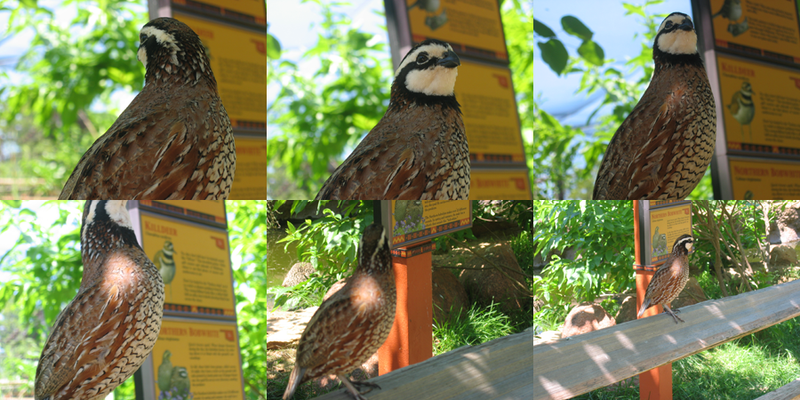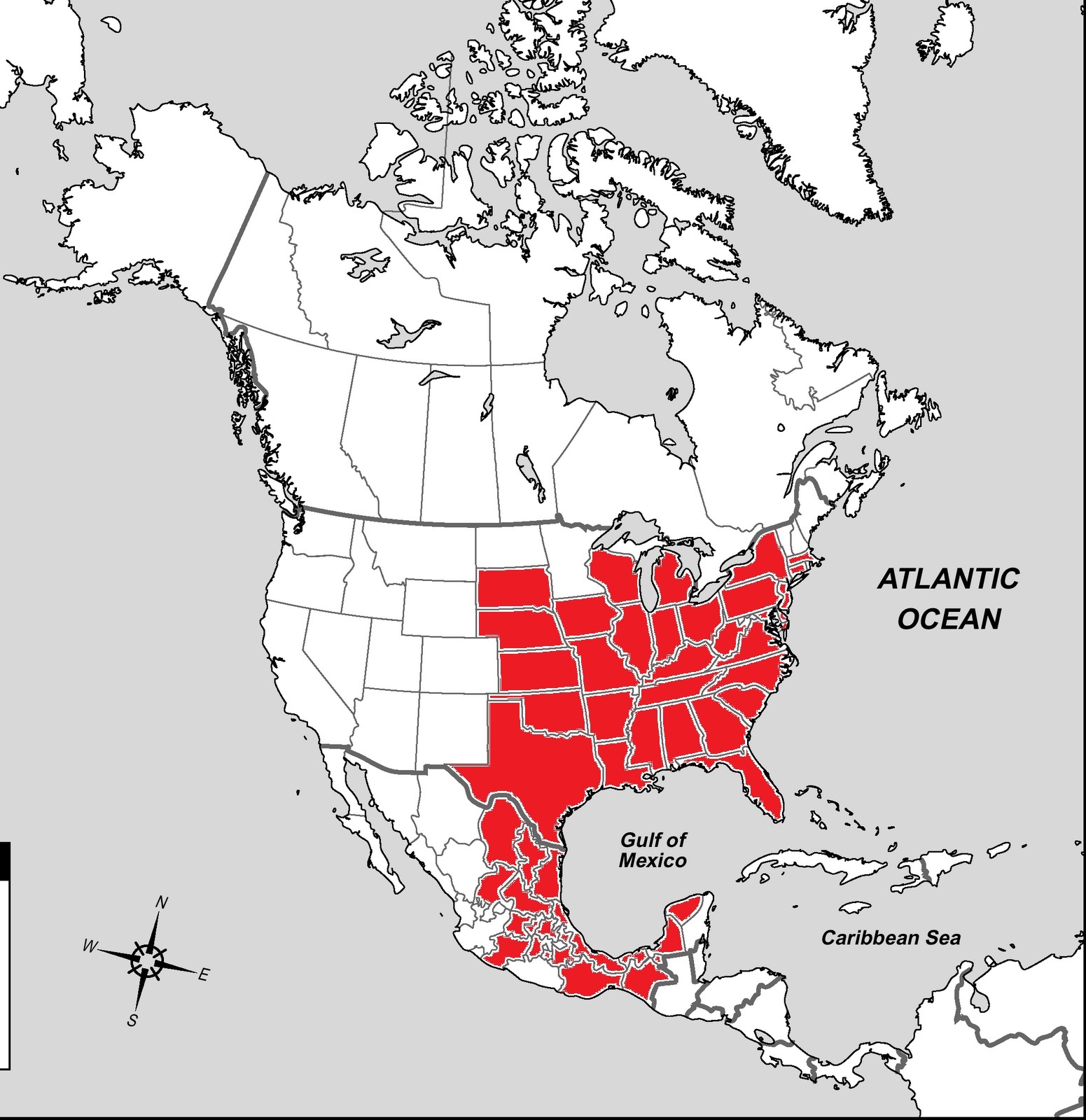Habitat
Colinus virginianus can be found in North and Central America. In the united states the bobwhite quail is most commonly found east of the Rocky Mountains, and in Central America they are found mainly in Mexico. This huge span of territory means that the bobwhite quail can live in many different types of habitats.
Habitats:
In each habitat quails need certain requirements to survive. These requirements are a place for feeding, a place for nesting, a place for roosting, and a place to clean themselves. To clean themselves the quails will dig a little hole and roll around in it, this act is called dusting.
Therefore quails can live in habitats such as grasslands, croplands, woodlands, brushy areas, and even desserts. They also don't usually stay in one type of habitat all year round, but instead move from habitat to habitat depending on the season.
 Grasslands are a great place for quails to be found in the spring
or summer. This is because grasslands can provide the quail with
great nesting, roosting, and feeding cover.
Grasslands are a great place for quails to be found in the spring
or summer. This is because grasslands can provide the quail with
great nesting, roosting, and feeding cover.
Croplands on the other hand, like areas found in the corn belt, are an excellent habitat for the bobwhite quail in the summer or fall season. Due to the readily available food in these areas, quails like to come here to eat. Croplands are also a great place for quails to clean themselves by dusting.
Woodlands and brushy areas are utilized by quails year round because they offer the best place for cover and safety. But they are also especially useful for the quail during the winter. In the winter, the grasslands and croplands will not have enough food or cover for the quail to survive. This forces the quail to seek refuge in the woodland and/or brushy areas where food can be more easily found and find a better place to roost to conserve body heat in the winter.
The bobwhite quails that live in the dessert don't have the luxury of moving from habitat to habitat. This means that many quails can be found near rivers or areas that are well irrigated.
Sadly, much of the habitats home to the bobwhite quail are being destroyed due to human interactions that are altering their homelands. Clearing of forests, cultivating of fields, destruction of the gross sod on the prairie due to farming, and pasture development have all negatively impacted the bobwhite quail's habitat.
This is not good for quails obviously, but it is also not good for the rest of their community. The bobwhite quail is both a primary consumer and a secondary consumer, eating both seeds and fruits of plants and by eating other organisms. They are especially useful for controlling insect populations. You can learn more about their diet on the Nutrition page. The bobwhite quail is also preyed upon and is the source of food for many other animals living in the area. You can learn more about their interactions with other organisms on the Interactions page.
Distribution:
This map shows where the bobwhite quail can be found in the United States and Mexico. It is pretty amazing that these birds can be found in so many places. But despite this wide area for them to grow, their population density is pretty surprising. It is estimated that the maximum density for the bobwhite quail is 1 bird per acre, and about 20 acres per nest!
Go to the Adaptation page to see just how these organisms survive in their habitats.

